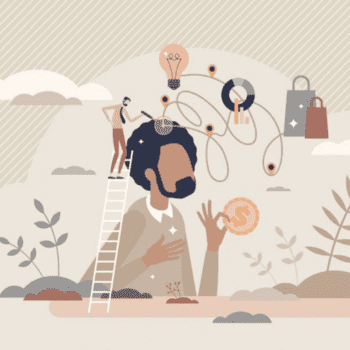Surprise is less straightforward. It occurs when you break away from the customer’s expectation for their experience with your brand. Customers expect a certain routine when buying a product or service, and when something positive happens that deviates from that routine, customers are surprised and that triggers the emotional response of delight. In most mundane customer interactions, there’s no delight without the element of surprise.
Six ways to create happy customers
Recent research looked more deeply at the theory of customer delight to understand what contributes to this type of emotional response. It identified six properties that can be present in a customer experience, either individually or in combination, to create delight. Here’s the list of those properties and some examples of how to do it:
1. Create positive emotions
There are a range of positive emotions that correspond with customer-reported delight. They include joy, surprise, awe, contentment, peace, relief, and a sense of achievement. While it might be tempting to try and generate all those lovely feelings in one go, it’s wiser to consider each one individually and examine how each emotion can be triggered at different stages of the customer journey. The joy may come from opening the door to a luxury boutique, or being handed beautiful package with a precious purchase inside. Suprise may come from finding a hand-written note in the box, or being shown a secret hidden benefit during a tour. Peace and relief can be found in being reassured of the excellent post-purchase service.
At every step in a customer expeirence, emotions play a part, and savvy brands make sure those emotions stay positive throughout the ride.
2. Prioritize interpersonal interactions
Positive interactions with service providers can help to create delight. That includes interactions experienced directly by the customer but also indirectly, such as hearing another customer interacting with an employee. Authenticity, sincerity, thoughtfulness, and a human connection all influence the customers’ perception of delight.
While that may sound easy, it requires customer-facing personnel to have a high level of emotional intelligence (or EQ). This quality an integral part of hospitality, which isn’t just an industry, it’s a skill set that starts with a strong foundation of EQ. One way to increase the EQ level among staff is to offer specialized training, such as training on customer experience.
3. The art of problem-solving and collaboration
While problems aren’t usually a good thing, having an element of problem-solving in their encounter was also found to be a path to delight. This is true for consumers who were less focused on service expectations and more on whether the product or service resolved the issues they were experiencing. It’s also a key element of service recovery, where brands turn problems into an opportunity to impress and retain the loyalty of their customer by solving difficulties in a way that goes above and beyond expectations.
4. Appeal to all five senses
Triggering customer senses can also elicit delight. Sights, sounds, flavors, textures, and odors can all influence how customers experience products and services. They also have the power to evoke memories and a sense of nostalgia, both of which can be a source of delight.
Luxury boutiques are famous for appealing to senses with rich smells, such as leather and perfume, and a glasses of champagne and little treats. New fun gadgets in fashion boutiques invite customers to play with outfits in a visually pleasing and interactive way.For some brands, this might seem difficult. How can a purchase made online trigger the senses? Easy, appeal to the sight and sound elements online, then deliver a package that includes something delicious such as a sample of luxury chocolates or a scented wrapping paper, all unexpected.
5. The timing of events
Customer delight can emerge from a prolonged sequence of events or be instantaneous, highlighting the importance of first impressions and after-service encounters. The desire for fast or more leisurely service depends on the customers’ needs and desires at the time.
One way to test the timing of the customer experience is by engaging with myster shoppers who can be mandated to evaluate their experience. Online retail environments must also be carefully analyzed using web analytics and consultants to sexamine User Experience (UX) issues. For example, the brands Zara and Nike both underwent UX analysis tests, where the timing of page load content was found to be a negative factor for both brands.
6. A sense of control
Having a sense of control or being able to shape their service experiences can also create positive experiences. Having lots of choices or simply being able to collaborate with a service provider to find an acceptable solution can be a route to customer delight.
Examples of this personalization factor abound across many sectors. Hotels can offer pillow menus and personalized concierge services. Restaurants can offer vegan or gluten-free options for their most iconic dishes. Good retail websites can give consumers easy tools to filter results that specifically meet their query.
In conclusion, the research suggests that it’s rare for just one of these properties to produce customer delight. More often, it’s a combination of two or more properties that create the positive experiences that lead to delight. Within that, three of the properties – positive emotions, interpersonal interactions, and problem-solving – most frequently produce delightful experiences.
“Customer Experience Management is becoming a top strategic priority for organizations. Leaders who aim to shape the future legacy of their business and industry must address this human value by engaging with customers at cognitive, emotional, behavioral and sensorial levels in what we call ‘the essential experiences’.” – Ryan Laver, EHL Alumnus
Frictionless is good, delightful is better
Businesses exist to create products and services that answer their customers’ problems and meet their needs. They aim to be functional and effective but not usually delightful. To be delightful, you have to go the extra mile, and when profit margins are king, that’s not somewhere many businesses are prepared to go. However, according to the research, it’s well worth it if you do.
One study found that the customer satisfaction associated with a frictionless experience had a diminishing return in terms of the customers’ repurchase intention when it reached higher levels. Customer delight, on the other hand, showed an increasing return. So, the more you delight your customers, the more loyal and engaged they become.
Improve customer experience and create positive events
To say it’s been a difficult few years is an understatement. The pandemic brought huge challenges and increased levels of depression, loneliness, and psychological distress. While the situation for many has improved, high inflation, rising interest rates, and war could lead to a global recession. In short, we all need some good news, and unexpected doses of joy and surprise can go a long way to improving people’s sense of well-being.
While a delightful experience with an organization might seem trivial given the scale of the problems many people face, being able to lift a customer’s mood becomes all the more powerful. Research suggests that customers remember the feelings from positive events for longer than negative events. Known as the fading affect bias, this self-defense mechanism helps us to maintain a positive outlook on life. So, the delight you create will be remembered. And ultimately, it’s how you make your customers feel that will keep them coming back for more.
 When a consumer chooses to buy a product or service, they expect a positive outcome. If you deliver that positive outcome, the customer, generally speaking, will be satisfied. If you go over and above to deliver a benefit they did not expect, then they experience delight.
When a consumer chooses to buy a product or service, they expect a positive outcome. If you deliver that positive outcome, the customer, generally speaking, will be satisfied. If you go over and above to deliver a benefit they did not expect, then they experience delight.















